Abstract
The microbial conversion of zearalenone by various species of fungi was studied. Among them, Rhizopus sp. was the sole fungus which produced a new metabolite from zearalenone in addition to alpha- and beta-zearalenol. The structure of the new metabolite was determined to be zearalenone 4-beta-D-glucopyranoside on the basis of mass, infrared, and nuclear magnetic resonance spectroscopies. The results suggest that the mycelium of Rhizopus sp. catalyzes the glycosidation at the C-4 position of zearalenone.
Full text
PDF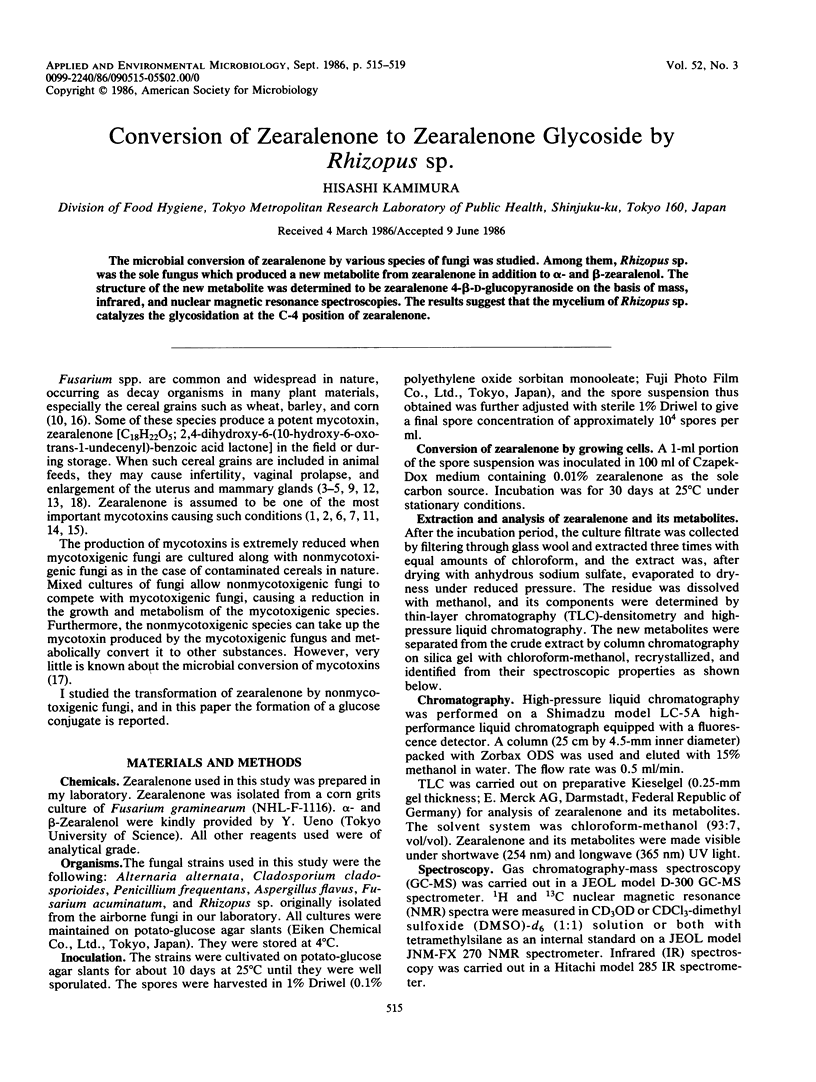
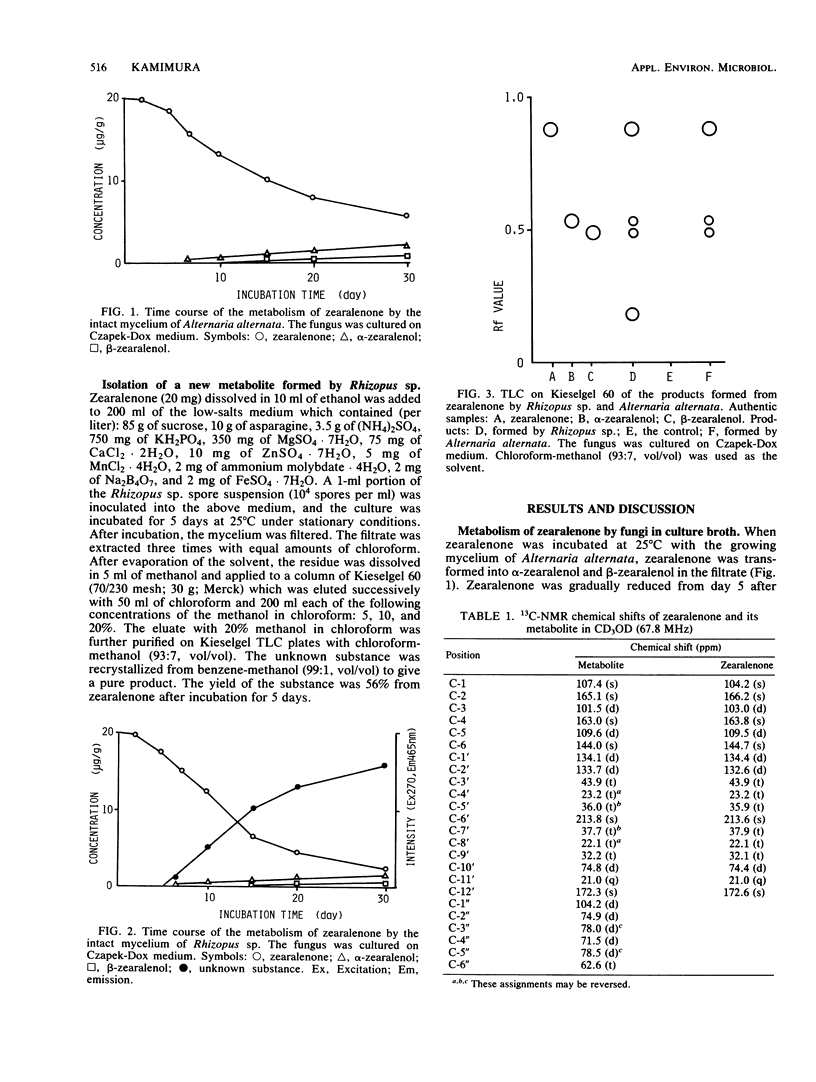
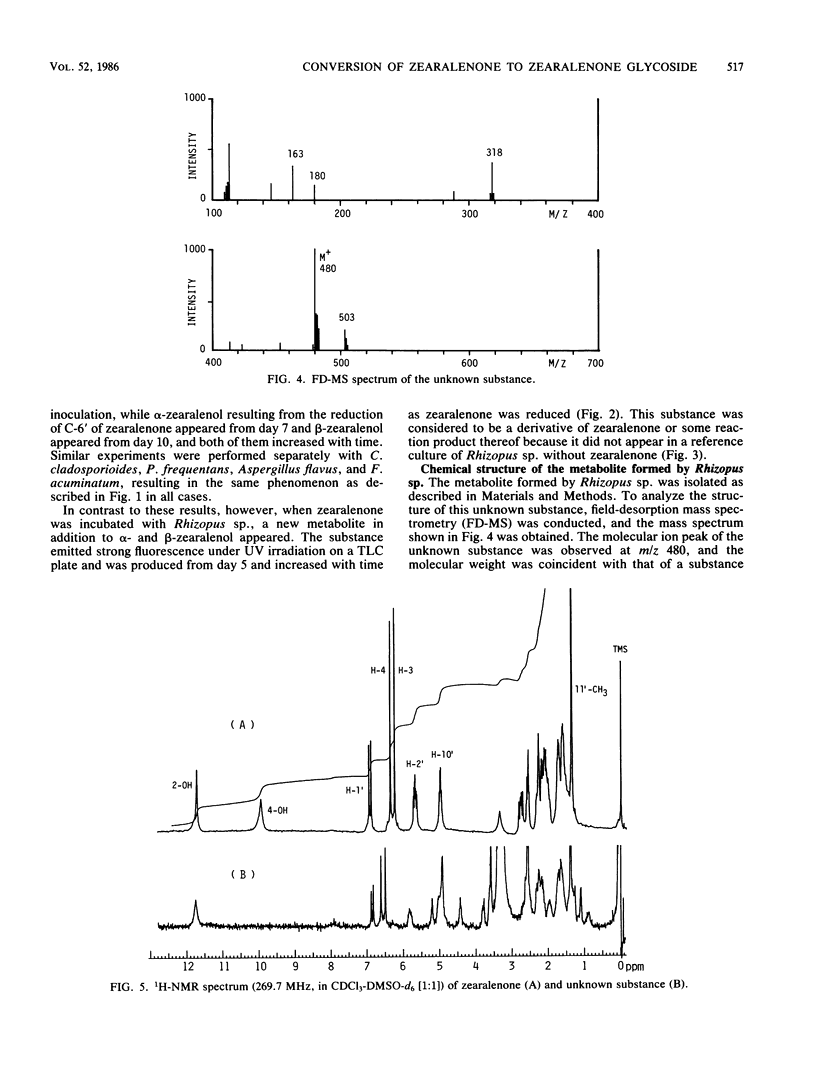
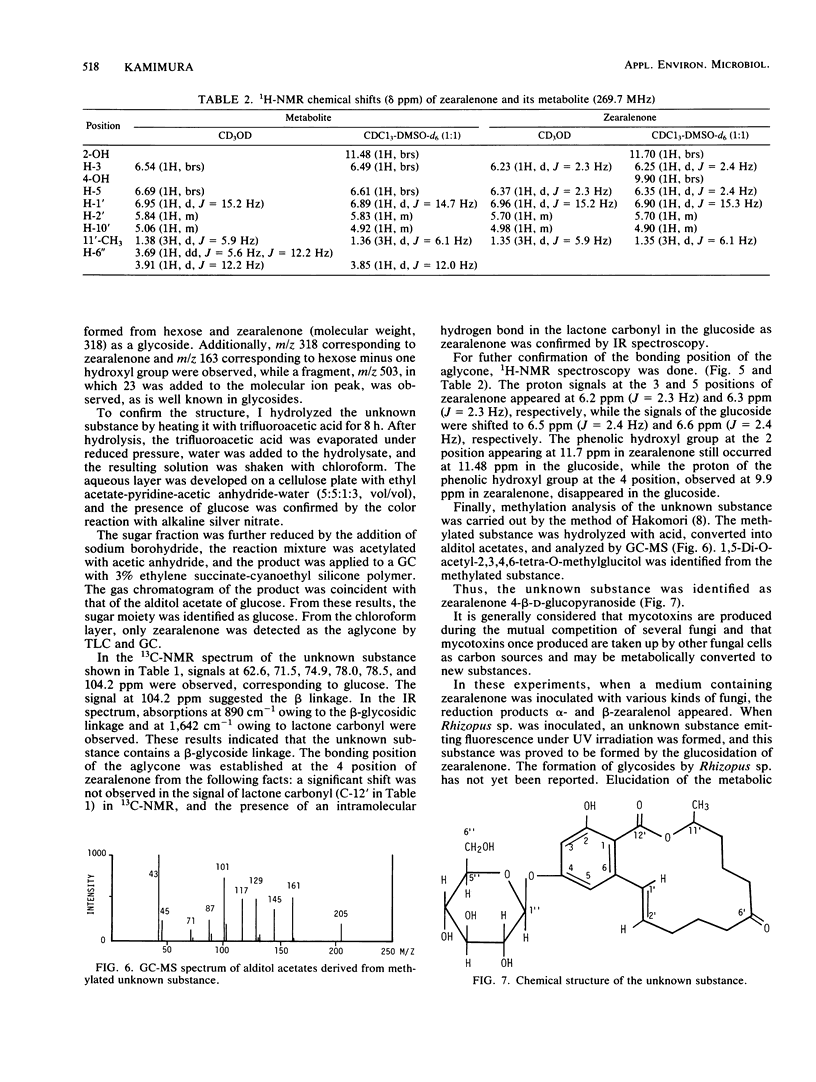
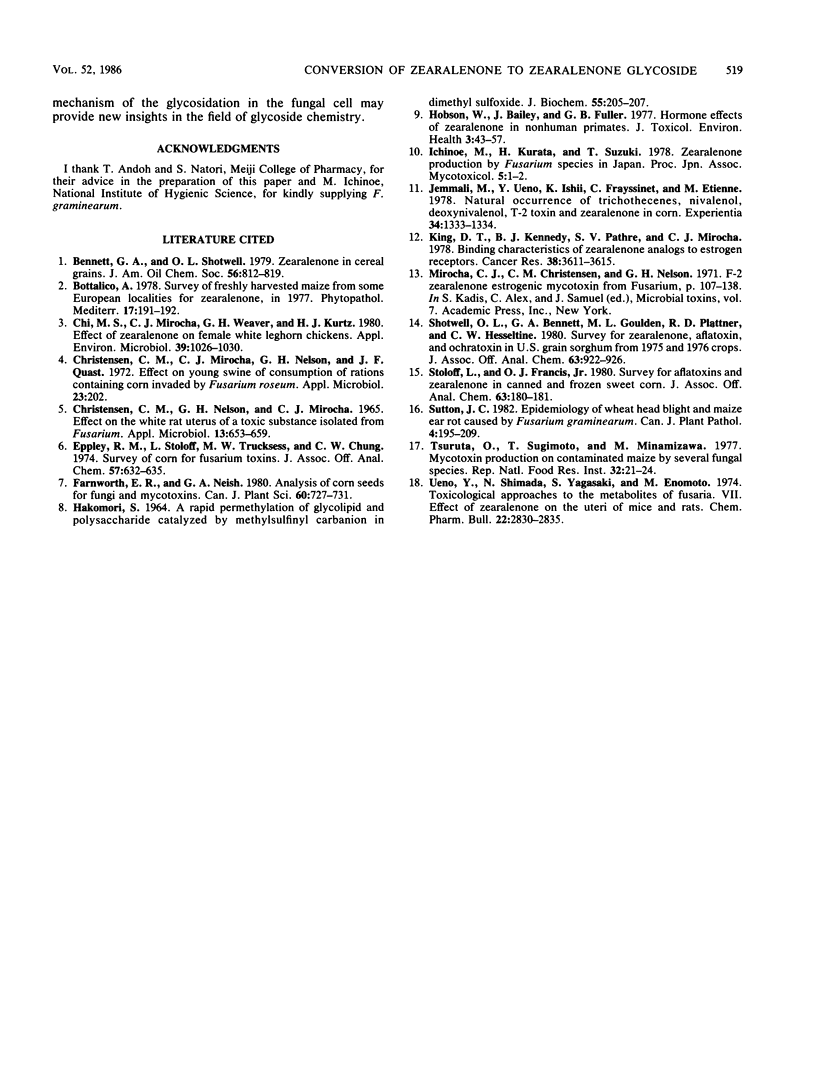
Selected References
These references are in PubMed. This may not be the complete list of references from this article.
- Chi M. S., Mirocha C. J., Weaver G. A., Kurtz H. J. Effect of zearalenone on female White Leghorn chickens. Appl Environ Microbiol. 1980 May;39(5):1026–1030. doi: 10.1128/aem.39.5.1026-1030.1980. [DOI] [PMC free article] [PubMed] [Google Scholar]
- Christensen C. M., Mirocha C. J., Nelson G. H., Quast J. F. Effect on young swine of consumption of rations containing corn invaded by Fusarium roseum. Appl Microbiol. 1972 Jan;23(1):202–202. doi: 10.1128/am.23.1.202-202.1972. [DOI] [PMC free article] [PubMed] [Google Scholar]
- Christensen C. M., Nelson G. H., Mirocha C. J. Effect on the white rat uterus of a toxic substance isolated from Fusarium. Appl Microbiol. 1965 Sep;13(5):653–659. doi: 10.1128/am.13.5.653-659.1965. [DOI] [PMC free article] [PubMed] [Google Scholar]
- Eppley R. M., Stoloff L., Trucksess M. W., Chung C. W. Survey of corn for Fusarium toxins. J Assoc Off Anal Chem. 1974 May;57(3):632–635. [PubMed] [Google Scholar]
- HAKOMORI S. A RAPID PERMETHYLATION OF GLYCOLIPID, AND POLYSACCHARIDE CATALYZED BY METHYLSULFINYL CARBANION IN DIMETHYL SULFOXIDE. J Biochem. 1964 Feb;55:205–208. [PubMed] [Google Scholar]
- Hobson W., Bailey J., Fuller G. B. Hormone effects of zearalenone in nonhuman primates. J Toxicol Environ Health. 1977 Sep;3(1-2):43–57. doi: 10.1080/15287397709529548. [DOI] [PubMed] [Google Scholar]
- Jemmali M., Ueno Y., Ishii K., Frayssinet C., Etienne M. Natural occurrence of trichothecenes (nivalenol, deoxynivalenol, T2) and zearalenone in corn. Experientia. 1978 Oct 15;34(10):1333–1334. doi: 10.1007/BF01981454. [DOI] [PubMed] [Google Scholar]
- Kiang D. T., Kennedy B. J., Pathre S. V., Mirocha C. J. Binding characteristics of zearalenone analogs to estrogen receptors. Cancer Res. 1978 Nov;38(11 Pt 1):3611–3615. [PubMed] [Google Scholar]
- Stoloff L., Francis O. J., Jr Survey for aflatoxins and Zearalenone in canned and frozen sweet corn. J Assoc Off Anal Chem. 1980 Mar;63(2):180–181. [PubMed] [Google Scholar]
- Ueno Y., Shimada N., Yagasaki S., Enomoto M. Toxicological approaches to the metabolites of Fusaria. VII. Effects of zearalenone on the uteri of mice and rats. Chem Pharm Bull (Tokyo) 1974 Dec;22(12):2830–2835. doi: 10.1248/cpb.22.2830. [DOI] [PubMed] [Google Scholar]


